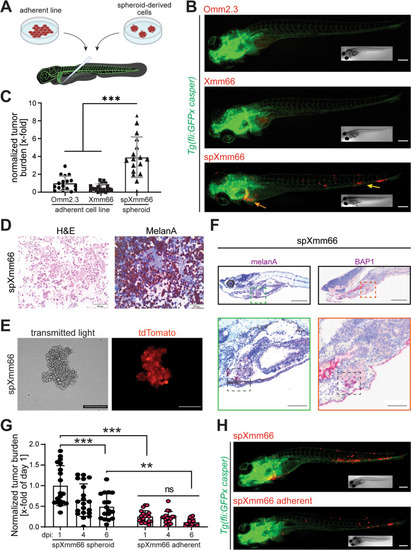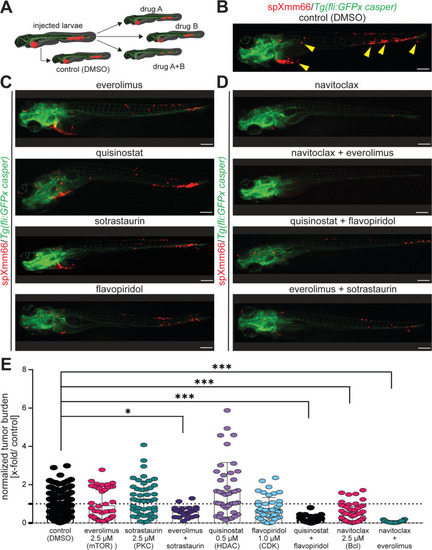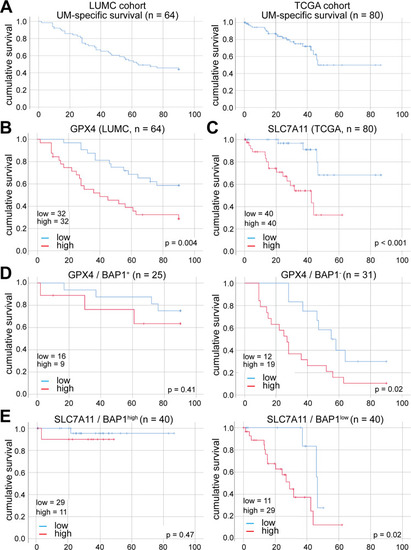- Title
-
Patient-derived zebrafish xenografts of uveal melanoma reveal ferroptosis as a drug target
- Authors
- Groenewoud, A., Yin, J., Gelmi, M.C., Alsafadi, S., Nemati, F., Decaudin, D., Roman-Roman, S., Kalirai, H., Coupland, S.E., Jochemsen, A.G., Jager, M.J., Engel, F.B., Snaar-Jagalska, B.E.
- Source
- Full text @ Cell Death Discov
|
Generation of highly metastatic uveal melanoma in zebrafish from spheroid cultures. |
|
Spheroid cultures can readily be established from both primary uveal melanoma tumors and patient-derived metastatic uveal melanoma tissues derived from murine xenografts. |
|
Metastatic uveal melanoma zebrafish model is suitable for drug screening. |
|
Ferroptosis-related genes negatively correlate with uveal melanoma patient survival. |
|
Ferroptosis induction inhibits metastasis formation in the metastatic uveal melanoma zebrafish model. |





